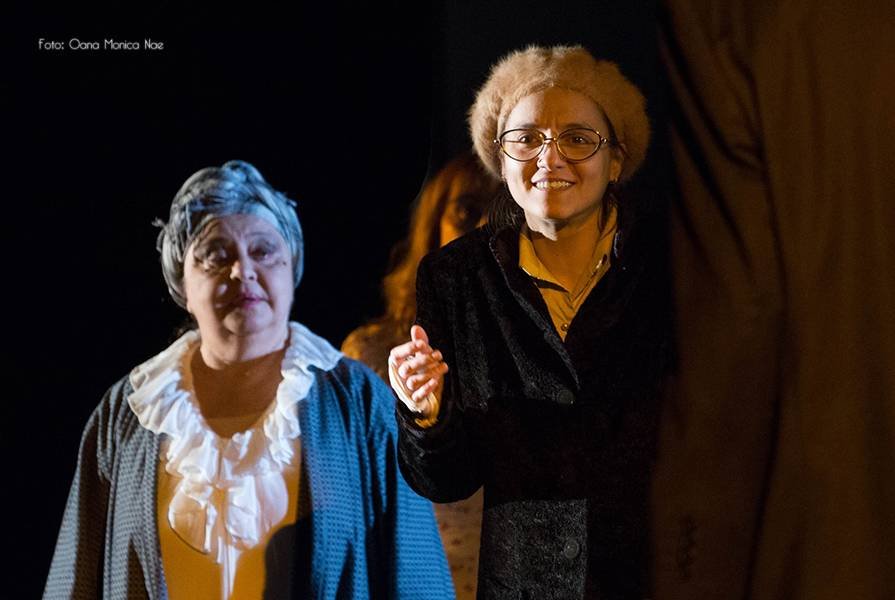The 10th edition of the Madách International Theatre Meeting in Budapest coincided with the Jewish holiday Sukkot (Festival of Booths). It is celebrated for seven days, one of which was symbolically marked by a performance of The Book of Ruth, performed in Yiddish by the artists of the State Jewish Theatre in Romania. Yiddish is a language that is buried, foreshadowing its demise. Its speakers have also been buried throughout world history. But they live. And the language lives. It resounds and resonates in hearts.
The Book of Ruth is a very personal story for its author Mario Diament, an Argentine playwright of Jewish origin. The plot behind the play is inspired by the life of his mother, who worked as a journalist in Buenos Aires and also in the United States, an immigrant from Warsaw who settled in Argentina in 1934. Her family perished in the meat grinder of the Holocaust. The writer recalled that his mother did not like to talk about the past because it was too painful. But the unspoken had to one day find the form of words… And of course, the tone and heartfelt awe with which this work is composed can be felt in every episode. Mario Diament is known as a journalist, screenwriter and playwright. Plays based on his texts have been staged not only in Argentina and Latin America but also in Europe and the United States. His play The Book of Ruth won the Streisand Award in the United States at the Jewish Play Festival in San Diego, California.
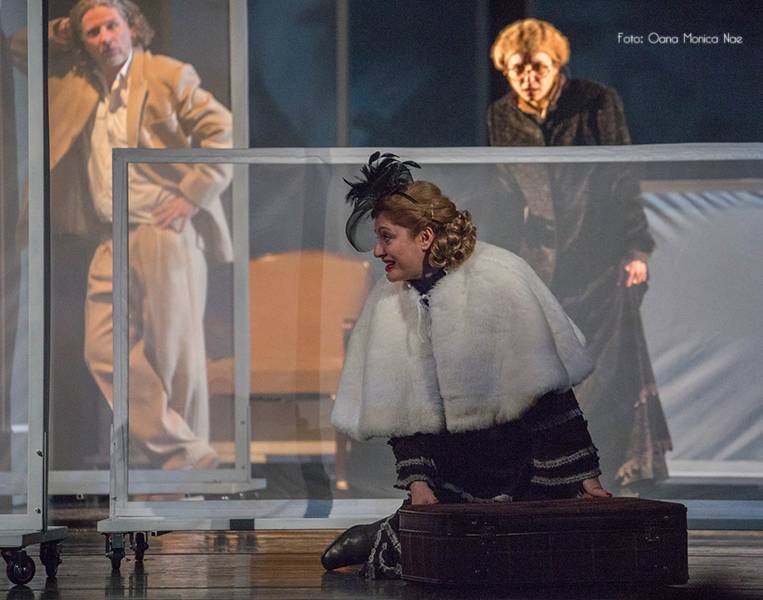
The Book of Ruth. Photographer Oana Monica Nae.
There’s nothing in the plot summary that you haven’t seen before. But it seems so only at first approximation. Technically, this is the story of a Jewish immigrant, Ruth (Katia Pascariu), who emigrated to Argentina from Poland with a suitcase of memories of her beloved country added to the heavy baggage of guilt that she survived and her family perished. Until her final days, Ruth feels the sizzling complexity of being a survivor who did not share the fate of her loved ones.
For forty years -the symbolic number of the Jewish people’s wanderings in the desert- Ruth lives in a country that was supposed to provide her a bright future. But she lives in a dark past. She left at the insistence of her mother, who sensed the changes in the country and the world and the smell of the impending Shoah. Her mother was sure that her daughter would have a brilliant life with the husband Boris (Mihai Ciucă) that her parents had chosen for her, but life had decided otherwise. At sixty-eight, Ruth looks back on her life as if she were living it all over again. Three ages of a woman, a little girl – a big girl and a mature woman. Three stories about how deceptive life is sometimes, promising, beckoning, and promising so much…
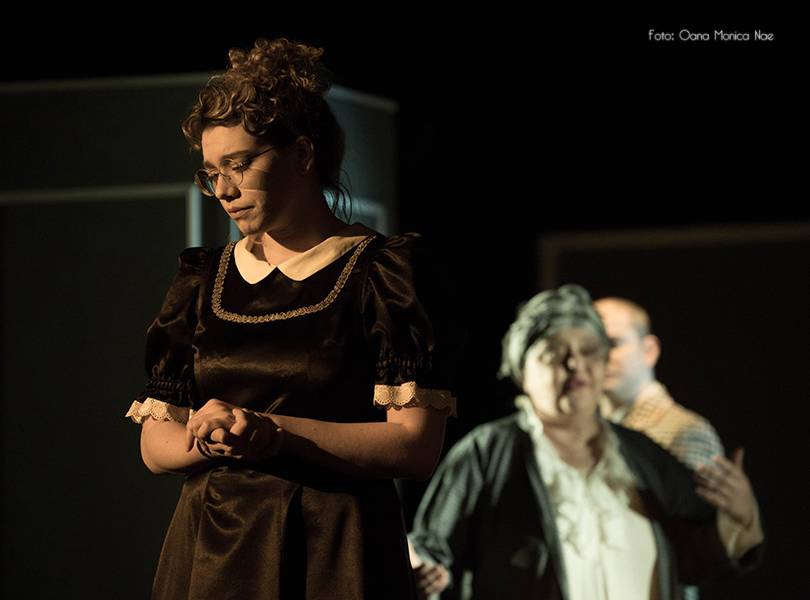
The Book of Ruth. Photographer Oana Monica Nae.
Yet The Book of Ruth, directed by Eugen Gyemant, who also designed the costumes and wrote the music, becomes much more than a nostalgic drama or the story of one woman’s plight. Grasping the fact that Ruth suffers from Alzheimer’s disease, the director has presented the viewer with a poignant and wounding work about a shaken world in which everything is not what it seems. Memory plays create a parallel reality. The mirrors in the play do not reflect but distort the image. Transparent panels installed on the stage create the effect of blurred image, distorted memory or cataract perception of reality, blurred judgment. Memories of Poland germinate in the proposed circumstances of Argentina, heroes lost in concentration camps come to life, phantoms and phantom pains substitute for reality. The past eats the present, and time, confronted with memory, learns its powerlessness, as Nobel Prize winner Joseph Brodsky once wrote.
Ruth’s story is a journey through the waves of memory and at the same time a rather frightening psychological trap of memories and fantasies. It is, at times, reminiscent of the psychological drama The Father by Florian Zeller. The heroine’s interlocutor, her son, who turns out to be the only real character in the play, listens, in fact, to the confession of his mother, who realizes at the end of her biography that she has lived a strange life. A life without a soul, because her soul never emigrated from Poland. But even for such a fate she does not anger the higher forces and people, does not grumble and is not embittered.
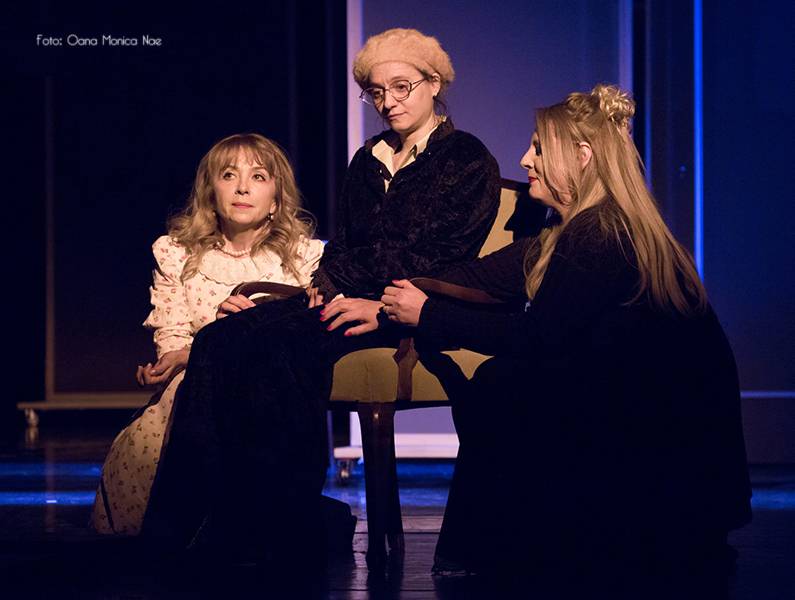
The Book of Ruth. Photographer Oana Monica Nae.
The carousel of memory resurrects disparate images and pages of life, details and faces. “Memories are like photographs,” says the heroine digging through the attic of her house and the attic of her own memory. The dust on things and objects suddenly turns into a hint that man was created from dust and turns to dust. Sometimes, as history has shown, to the ashes of crematorial ovens. The photos fade, decay, the people in them are forgotten, the dates are erased. A powerful mother (Mirela Nicolau), a first love Max (Darius Daradici) with artistic impulses, a “profitable husband” Boris (Marius Călugărița) with an enterprising nature. Between love and “unlove”, the life of the heroine passed, who did not know happiness either as a wife (she failed to love her husband who loved her) or as a lover… The breast cancer that the heroine suffered is not only a diagnosis but also a metaphor for her life, something that daily and inexorably eats away at her soul.
The story of a disease of the century, the story of a mental illness, the story of a woman, the story of a family….No, The Book of Ruth, scene by scene, becomes more and more the story of a people and the story of an exile – an attempt to understand what it means to be a Jew – and the story of the Yiddish language. The play was originally written in Spanish, but by the author’s own admission the voices in his head still spoke mameloschen – his mother tongue. Thanks to Maia Morgenstern and The Jewish State Theatre, the characters in the play have spoken in their mother tongue. This is an important aspect for a play that was shown as part of a festival within a festival – the Synergy Theatre Festival, which is based on the themes of multiculturalism and linguistic diversity, is organically integrated into the MITEM program.
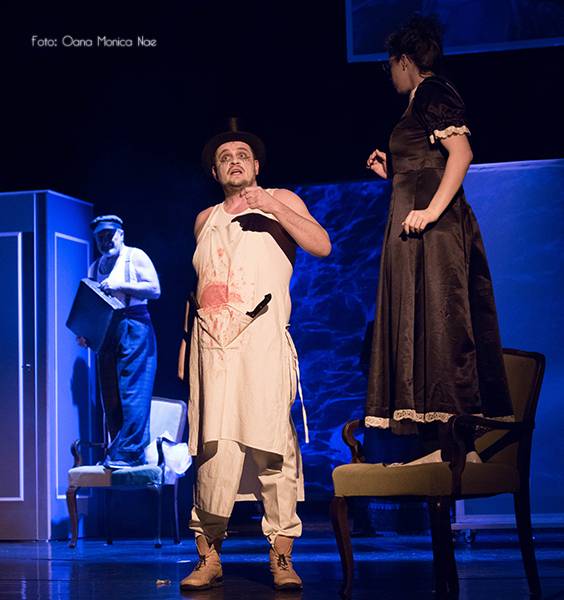
The Book of Ruth. Photographer Oana Monica Nae.
The time scale shifts to our days. Days of new wars and disasters. A story of exile and a story of escape at the same time The Book of Ruth despite its immersion in the events of a century past, is seen as a relevant work today, given the horrifying statistics of those fleeing war today, often leaving their families behind involuntarily. This makes the play not purely a Jewish story, but a universal one. The search for a better life or just living, for survival is always accompanied by loss and very certainly not about the material side of life. The Book of Ruth is a kaddish; a memorial prayer for days of peace, for dreams that have a way of not coming true, for all the unmourned, for those who are gone but who are with us forever.
The Book of Ruth is not pretentious, but even at the level of its title, it touches on biblical context. The Book of Ruth is a Torah portion that is traditionally read on the Jewish holiday of Shavuot, which commemorates the giving of the Torah to the Jews on Mount Sinai at the Exodus from Egypt. Ruth, distinguished for her righteousness and beauty, was the great-grandmother of the great King David and her story is the story of “a stranger among her own and her own among strangers”.
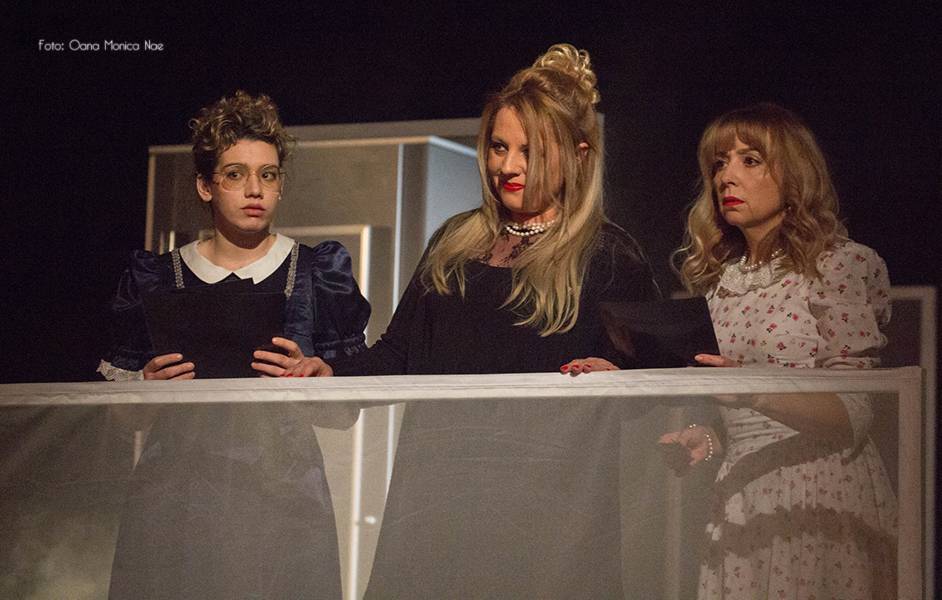
The Book of Ruth. Photographer Oana Monica Nae.
The Book of Ruth is an ensemble performance about how scary it can be to face one’s own memory when left alone with it. It is an offering to ancestors and a warning to posterity that from forgetfulness to remorselessness is a few memories rubbed together with new experiences. The space on the human “memory map” is limited, it has to be cleaned out. But no matter how one cleans it, the past still comes through. History opposes forgetfulness, showing (regularly) what it can lead to. Memories are a critical reminder. Literature prescribes: “There’s rosemary, that’s for remembrance; pray, love, remember: and there are pansies. That’s for thoughts” ( Shakespeare). The Book of Ruth is a play of minutes of silence and minutes of applause. Silence and gratitude. Stoic silence and words bursting from the chest.
This post was written by the author in their personal capacity.The opinions expressed in this article are the author’s own and do not reflect the view of The Theatre Times, their staff or collaborators.
This post was written by Emiliia Dementsova.
The views expressed here belong to the author and do not necessarily reflect our views and opinions.

